
Australia So Much to See

Copyright (C) 2013 AustraliaSoMuchtoSee.com. All rights reserved
A. There are very specific requirement regarding the signs used and their placement on your vehicle or trailer. These are outlined
in the Standards Bulletin VSB 12
Extracts:
If your vehicle (meaning the towing vehicle together with the trailer and
projecting load) is 7.5 metres long or longer, you may have the sign “Do not overtake turning vehicle” displayed at the rear of the
rearmost vehicle. This can be either a separate sign or the words can be incorporated on either the left hand marking plate only,
or both left and right plates. By having this sign attached to the rear of your vehicle, other following vehicles must give way to
you.
Please note that if your vehicle (meaning the towing vehicle together with the trailer and projecting load) needs to straddle
lanes or turn from an adjacent lane in order to turn left or right at intersections and it is 7.5 metres long or longer, you must
have the sign “DO NOT OVERTAKE TURNING VEHICLE”. Not having “DO NOT OVERTAKE TURNING VEHICLE” sign on these vehicles is illegal.
The
“DO NOT OVERTAKE TURNING VEHICLE” sign must not be displayed in certain jurisdictions where a vehicle (or combination) is less than
7.5 m long.
Most caravans with tow vehicle and many motorhomes exceed 7.5 metres overall length. While fitting of Do Not
Overtake Turning Vehicle stickers is optional rather than compulsory for caravans and motorhomes, if you never need to straddle the
white line when turning you do not need the signs, but if at times you do then you do need the signs fitted.
The front reflective
surface of the plate must bear the name of the manufacturer or agent. In addition, Class 2 marking plates must also be marked with
the words “AS1906 Class 2” or “AS4001.2 Class 2”. “Class 1” plates also display letters indicating the correct orientation on the
vehicle.
Refer to VSB 12 for descriptions of Class 1 and Class 2 marking plates (stickers). Note that Class 2 has
been discontinued, but those already in use can be used up to 31 December 2020.
Additional rules for size and placement
apply in New South Wales.
316–1 NSW rule: minimum sizes for do not overtake turning vehicle signs and give
way to buses signs
(1) Without limiting rule 316, a do not overtake turning vehicle sign or a give way to buses sign does not
comply substantially with these Rules unless the sign also complies with the size requirements for the sign set out in this rule.
(2)
A do not overtake turning vehicle sign must comply with following requirements:
(a) the sign must have a minimum area of 0.125
square metres,
(b) the words “DO NOT OVERTAKE TURNING VEHICLE” must appear on the sign in block letters with a height of not
less than 50 millimetres.
(3) A give way to buses sign must have a minimum area of 0.125 square metres.
Note. This rule is an
additional NSW road rule. There is no corresponding rule in the Australian Road Rules.
From Road Rules 2014 New South Wales
See
more in Safety
Updated July 2018
Fuel and vehicle costs: You will know your vehicle’s fuel consumption rate when towing. Work out how far you intent to travel. Include
in your calculations that sightseeing and incidental driving and side trips can double the distance travelled compared to the direct
route as taken from a planning map.
Camping fees: Depending on your camping style, how well equipped you are for independent camping and opportunities for free camping,
this again will vary hugely from person to person and the availability in the areas you are travelling in. Travelling through the
centre of the country free overnight camping was easy to find, but when we got towards the east coast we had to use recognised camp
grounds or caravan parks. If you have adequate solar power, unpowered sites are sometimes cheaper than powered sites.
The
cost of most caravan parks can be checked on the internet and can vary from over $50 per night in key coastal resort towns, to $20
per night in some small towns. Community run campgrounds can be even lower priced. There are various resources for reports
on caravan parks to help you choose.
Different areas have different priced camping fees so it depends where you are travelling
as well. We were travelling in areas where we would choose to visit an inland National Park rather than coastal resort towns. Our
caravan is set up for remote and independent bush camping as this is our chosen way of holidaying.
Bear in mind it will
work out cheaper and easier to stay at a none-to-cheap caravan park at the site of the feature you want to spend a few days touring,
than commute daily from a free camp some distance away. For example in 2009 the dearest we paid was at Takarakka near Carnarvon Gorge in
Queensland but it paid to stay for time and travel cost savings.
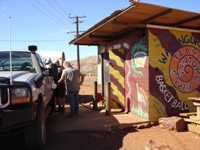
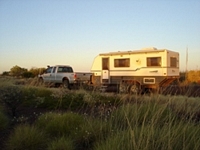
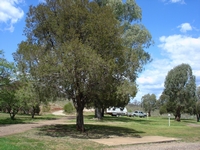
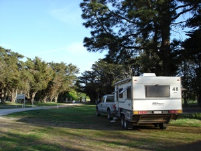
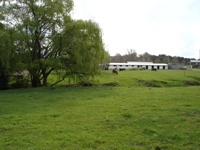
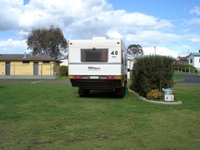
A. It is an open ended question - and it will cost as little or much as you have available.
The following will help you work
out your own monetary needs.
As a rule of thumb for travel budgeting
If you can live on $100 per week at home
you will probably do similar on the road, and if you live on $1,000 per week, you will most likely keep up the same lifestyle. It
does cost a bit more for food; no home grown vegetables, no bulk buying, and costs in remote places will be higher particularly for
fresh produce. Work out what it costs you at home and allow a bit more. Your shopping trends will be similar for food, extras and
drinks as when you are at home. This of course will be different for someone from a different country.
Do you eat out a lot? Or
do you always make your own lunch? These will be known factors and you will probably continue to do as you do at home. An occasional
meal out at a local pub or restaurant can be a good way to reward a town which provides good free or very low cost camping as well
as giving the cook a break, so make allowance for this as often or as infrequently as you choose.
Fuel prices increase considerably in rural and remote areas so add 50% again to city prices to be safe.
Allow the same amount
as you spend on fuel for regular repairs and maintenance including tyres and minor spares and the occasional unforeseen repairs.
Have
a healthy reserve set aside for a major breakdown (eg blown gearbox or motor).
This makes no allowance for vehicle replacement.
Park passes and permits are usually only small additional costs. Getting a state wide parks pass in states that charge park entrance
fees can be a saving on paying each time if you are visiting lots of national parks. Particularly valuable in New South Wales,
where park entry fees are to be paid daily, a "Country Parks Pass" costs $45 per annum (20% discount can be obtained by Seniors
Card holders). Daily fees at parks covered by this pass are $7 per car, so if you visit parks for seven or more days,
the parks pass has been of benefit to you.
Your fuel budget will depend on how far you will travel in a day/week. You can move quite quickly travelling 300 to 400 kilometres
daily, average travel with sightseeing 100 to 200 kilometres per day, or find a lakeside free camp and stay for a week or two (all
the better if the fish are biting). Our daily average on longer trips is between 100 and 200 kilometres.
Your
caravan may also need maintenance from time to time for regular things such as brakes, wheel bearings and possibly water delivery
hoses. Factor this into your cash flow. Freight costs of obtaining parts will be higher in more distant and remote locations
and you may have to pay caravan park fees whilst waiting for parts if it is a breakdown that has immobilised you.
How competent
are you at doing your own repairs? Mechanics and technicians in remote locations will charge more to cover their costs in these locations,
but doing your own repairs if you are not suitable skilled may well be more costly in the long run. Of course 240 volt electrical
work and gas delivery appliance work must be done by appropriately qualified and licensed tradespeople.
Static costs: Regular costs such as insurances and licences will be the much the same as when your rig is at home. Your regular bills
at home such as rates and power will continue unless you have sold your home or someone else becomes responsible for any of these
costs. Renting out your home is a whole story again with alarm bells ringing, and tenure of rent cannot be guaranteed.
How much did it cost us?
Some travellers quote costs like $1.00 or $1.50 per kilometre travelled for easy budgeting.
This does not include the static costs that would apply regardless if at home or travelling, hence I suggest that you keep a separate
budget for these.
Looking at our costs on a five month lap in 2009, and you would need to allow for inflation on this,
our costs equated to $1.00 per kilometre travelled. It did include some expensive maintenance and replacement both in preparation
for and during the trip, including new caravan batteries, battery charger, replacing caravan springs, repairs to brakes, tyre replacements
and a new laptop computer.
On this trip we rarely ate out and cooked economical simple meals, and no bottles of wine on the shopping
list. Cruises and entrance fees were minimal with no big priced ones.
We chose National Parks and bush camping over caravan
parks much of the way, with 29% of our nights spent in caravan parks. 24% of our nights were spent in gravel pits or on old roads
completely on our own, with the rest a mixture of National Parks campgrounds, free and low cost campgrounds or roadside rest areas.
May 2015
Entrance fees, flights, cruises: These can vary between a few dollars to visit a small town museum, to thousands of dollars for flights
and cruises, eg a cruise of the spectacular Kimberley coastline most of which is inaccessible by road.
It is worthwhile
to occasionally visit a small museum in a rural town and learn about the local history, as well as high profile ones in bigger
towns; just pick a selection to suit your interests. Entrance fees are variable and the cost of high profile places that youwant to
visit can be researched. Cruises and flights – the sky is the limit. What you take will be tailored to match your means.
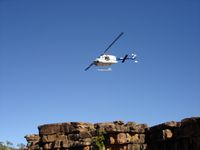
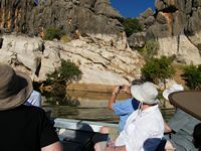
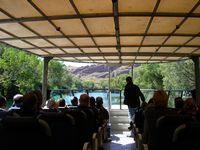
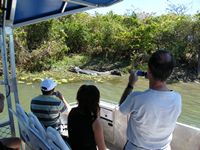
Medical and pharmaceutical needs: These will be similar to when at home.
Souvenirs and gifts for the
family: You can decide ahead of time how much you plan to spend in these areas. Gifts may depend on the number of grandchildren
you have.
Keeping costs down looks at further options.
Always have a bit to spare for unforeseen, or even a
flight back home if needed for urgent health or family matters.
You can only get to see the colourful and water carved walls of Geikie Gorge near Fitzroy Crossing in the Kimberley from the boat
tour
A must when in Kununurra Western Australia is a trip up the Ord River (Lake Kununurra) on the Triple J boats
A helicopter flight gives a whole new dimension to what you have seen on the ground. Here flying over Mitchell Falls in the
Kimberley
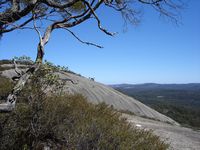
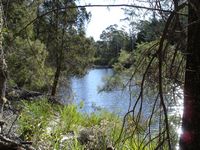
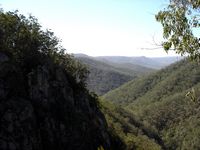
Bald Rock National Park, New South Wales, Australia
Boonoo Boonoo National Park, where the river tumbles down a sheer 210 metres
A pool by the campground in the Boonoo Boonoo National Park.














